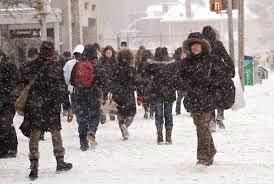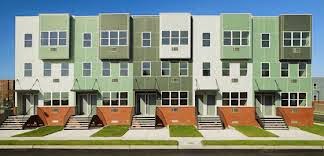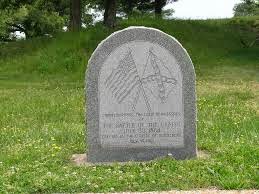http://nextcity.org/features/view/new-york-city-affordable-rent-affordable-housing-de-blasio-alicia-glen
 |
Winter Storm "Hercules" slamming New York
photograph courtesy of Shutterstock
nypost.com |
Hello Everyone:
I would like to give a shout out to everyone from southern New Jersey to Maine who are about to be buried under the coming blizzard. Stay warm, stay safe, stay indoors. Meanwhile, those of us on West Coast can take particular glee in the relatively benign weather.
Is affordable housing possible in New York City? Can gentrification be the solution to the city's affordable housing problem? This is the paradox that Henry Graber explores in his article for
Next City titled, "Inside the Gamble That Could Make or Break Bill de Blasio." In the waning weeks of his twelve year tenure, former Mayor Michael Bloomberg insensitively expressed this thought, "Somebody said that there's not enough housing. That's a good sign...That will bring in investment for people to build for all income levels, different kinds of housing." Maybe.
 |
New York City housing project
stvinc.com |
From an Economics 101 point of view, demand should generate demand. At least that what blogger remembers from Economics class. Mr. Graber writes, "New York City added 180,000 units of housing between 2002 and 2011-more than the 167,000 it added between 2000 and 2010-and the vacancy rate has risen slightly." However, the average apartment rent went up by 75 percent between 2000 and 2012, while real income dropped. Thus, Mr. Bloomberg's "filtering" theory-a sort of housing version of trickle down theory-housing construction boom would alleviate the housing crises has not held up. The more progressive Mayor Bill de Blasio avoided Mr. Bloomberg's sledge hammer-like rhetoric in his first year of office but despite his pro-worker stance, Mr. de Blasio has a deep like for the real estate industry. Thus, Mr. de Blasio is banking on "new, market-rate construction to alleviate the housing crisis as much as Bloomberg was."
 |
"Housing New York"
nyc.gov |
In 2014, Mayor de Blasio announced an ambitious municipal housing plan, "Housing New York," designed to remedy the lack of affordable housing in the city. The 117-page plan offers solutions for a wide range of problems, some the city's own issues and some not. The essence of the plan is leverage, "having investor contributions triple or even quadruple the city's own financial stake." Increasing the city's financial stake is one reason why building affordable housing is economic issue. The job of overseeing this task belongs to Alicia Glen, a former Goldman Sachs executive and early mayoral appointee. Ms. Glen is the first deputy mayor for housing and economic development. At times, Ms. Glen comes off like former Mayor Bloomberg, "rents are rising, the market's hot, it's great," she declared at a conference this past autumn.
Given this perspective, gentrification flows from the "reserve of pent-up demand who financial power was not properly harnessed during the Bloomberg years." Ms. Glen told Mr. Graber, "Had we had the tools at the time...we would have gotten a lot more affordable housing out this boom. May New Yorkers would feel less, quite frankly, pissed off by the fact that's all this luxury housing and not so much affordable housing." Now, the tools have finally arrived.
 |
New York City brownstone
stvinc.com |
The toolkit includes a new set of requirements and incentives all intended with bold goal of inducing the "private sector to build about half of the 80,000 new affordable units" promised by the mayor. On a broader note, the de Blasio administration hopes that private funding will buttress public investment by a factor of at least three. The city will commit $8.2 billion to the enterprise, as well as $2.9 billion in state and federal money. Both Ms. Glen and Mayor de Blasio hope that the private sector will add $30 billion.
"The plan incorporates cross-subsidization more than any plan I've seen in the country," Andrew Ditton, the managing direct of Citi Community Capital share with a group of architects, planners, and developers at conference in October 2014. Affordable housing and real estate developers? Sounds strange in the same sentence. However, Mr. Graber points out, "...this is conventional wisdom in high-cost, capitalist cities like San Francisco and London. In New York too, the wagon of affordability will be hitched to the engine of high-end development. It's an efficient use of public dollars. But does it work?" At the moment, interest rates are low, demand is up, and there is a political consensus regarding the immediacy of New York's affordable housing crises. Mr. Graber speculates, "If the plan falls far shot of its goals, it won't just be a setback for New York's progressive mayor. It will go to great length toward disqualifying the dominant municipal philosophy of affordable housing which eschews widespread regulation in favor of leverage, incentives and a hearty embrace of real estate power." Therefore in order to solve the affordable housing crises, a plan must be implemented to "stoke the fire that created it."
 |
New York City affordable housing development
nyshcr.org |
An "Urbanist Asset Class"
The New York City affordable housing crisis is one of the biggest on the planet. Citing a recent report from the McKinsey Global Institute, Henry Graber writes, "the cumulative distance between what New Yorkers should pay for housing (30 percent of income is most common metric) and what they do pay for housing is $18 billion. No metro area in the world has a larger 'affordability gap' than New York." The burden is greatest on families making less than 50 percent of the area median income. In fact, over eight of ten families are "rent-burdened." It is not just families below the area median (under $40,000 for a family of four) that are "rent-burdened," this problem continues up the economic scale. Over 60 percent of the families at or above the area median income ($42-$67,000) are also "rent-burdened." Over 30 percent of New York renters spend over half their income on housing. A family applying for the affordable housing lottery in Manhattan has a 400 to one chance of getting a new residence.
 |
"New York City Preserves Public Housing"
archdaily.com |
The "Housing New York" plan was released in May 2014, calls an additional 200,000 units of affordable housing over the next ten years: 80,000 new units and 120,000 "preserved' units not permitted from leaving the city's subsidized housing programs. What makes this plan different from the current plan-reliance on the public sector-is its reliance on the private sector. The post-war housing program in the five boroughs was a response to an estimated shortage of 430,000 units in 1950. This created a two-fold problem. First, it resulted in clearing dozens of "slum" neighborhoods and the building of almost 150,000 public housing units. Second, the state of New York inherited jurisdiction over the federally imposed rent control, which covered a staggering two million New York City apartment units in 1950. With the current plan's emphasis on leveraging public investment, the appointment of Alicia Glen with her background in finance, is no surprise.
 |
Kings Theater
Flatbush, Brooklyn, New York
nyrealestatelawblog.com |
While at Goldman Sachs, Ms. Glen ran the Urban Investment Group, an program that directed investors towards inner-city projects, neglected by banks. The UIG also played an important part in financing several New York-area projects such as the $90 million restoration of the Kings Theater in Flatbush, Brooklyn. One of the group's big success was the creation of an "urbanist asset class." According to Ms. Glen, "It's become sort hip and trendy to talk about this...but ten years ago, when I started all this, that was not much in the nomenclature." Ms. Glen's function in the de Blasio administration, in one respect, continues her previous work at UIG: convincing the private sector (i.e. businesses, developers, and investors) that there is money to be had in New York City, including in less affluent neighborhoods and on unconventional projects.
This is particularly important for the residential construction industry, which has recovered more slowly in New York City, then other places. Moving ahead, any housing project wishing to take advantage of neighborhood rezoning or seeking rezoning change will have to include affordable housing units. The program, "mandatory inclusionary zoning," is meant to improve on the meager stock under the Bloomberg administration's optional inclusionary zoning program, which yielded a paltry 2,700 units in ten years. The current administration, which expects 20 to 30 percents of privately financed units to be affordable, will surpass the Bloomberg 10-year total every year.
 |
Boricua Village
wirednewyork.com |
The Million Apartment Question
Like almost every municipal affordable housing scheme, the New York City plan is split between preservation and development. Despite lopsided numbers, the emphasis is very much on preservation. The rental stock, subject to rent stabilization, could be smaller in a decade. Mayor de Blasio's preservation goal is modest improvement over former Mayor Bloomberg's minuscule achievement. However, the largest amount of New York City's affordable stock is something beyond Mayor de Blasio's control: the remaining one million rent controlled apartments.
 |
Bronxdale Houses
AP photo/Bebeto Matthews
nydailynews.com |
In the last twenty years, the city's rental stock has grown and changed. For example, in 2011, the number of rental units covered under the rent stabilization ordinance was 47 percent, a twelve point drop from 1991. Some of this decline could have been the result of new market-rate rentals. Nevertheless, the decline in rent stabilized units has been big. To quantify how big is big, New York City endured a net loss of over 150,000 rent stabilized units between 1994 and 2012. That is equivalent to the entire housing stock of Cincinnati, Ohio.
From the beginning, rent stabilization has been the enemy of property owners, real estate developers, and economists who argue "that their subsidy for longtime residents stunts the continuing evolution, strains landlords and distorts the city's housing market." Blogger remembers hearing this argument in economics class and the uproar it caused in yours truly's oh-so-liberal college. Truth be told, rent stabilization does little good for new arrivals to the city. As blogger understands it, a person can live out their entire life in a rent controlled apartment, then pass it down to a family member, thus keep a perfectly viable unit off the open market. The consequence of this is a newcomer's housing costs go up. However, New York State's twin rent control program, with an average tenant income of $36,000, is the single most potent guardian of New York City's economic diversity.
 |
Affordable housing in Brownsville, Brooklyn
inhabitat.com |
Through various unit exit opportunities, the available rental housing stock has dramatically shrunk the city's portfolio. While Mayor de Blasio has been aggressive in trying to wrest rent stabilization control from the majority Republicans in the New York State Senate, however, the prospects for the Mayor accomplishing this feat have diminished. Barring any late breaking miracle in Albany, the program's reach will also continue to disappear, placing a great deal of pressure on New York City's ability to retain as much affordable housing as it can.
Benjamin Dulchin, the executive director of the Association for Neighborhood and Housing Development said, "As much as it's important for the city to build, because there are so many New Yorkers coming, it's also true that we can't build our way out of an affordability crisis...The Bloomberg administration said that by creating all the new development opportunities and by allowing all these market-rate units to be developed, that would relieve pressure on the lower end of the market. It's pretty clear that it didn't happen." With barely any room to expand the preservation programs, Mayor de Blasio has to hope that developers can take up the slack.
 |
Atlantic Yards B2 Tower
Brooklyn, New York
therealdeal.com |
The Point of No Returns
In early 2014, the de Blasio administration reached an accord with Forest City Ratner, the developer of the Brooklyn area project formerly know as Atlantic Yards. This deal was one of Alicia Glen's first major affordable housing negotiations, giving the de Blasio administration reason to celebrate, but not everyone was jumping for joy. The reason, back when he was still Councilman Bill de Blasio from Park Slope and the project was still in the planning phase, Mr. de Blasio insisted that the maximum income for affordability qualification should be $80,000 (income for a family of four). By blogger's own estimation, even in 2007 New York City, if someone is making $80,000 a year they can afford a small place in a decontrolled apartment building. For further reading see
http://www.furmancenter.org/files/sotc/SOC2012_Renters.pdf Currently, about half of the designated affordable units in the first two towers will be rented to families with incomes of up to $138,000. The brain reels at the absurdity of it.
 |
Richmond Place
Queens New York
brokelyn.com |
Henry Graber concedes, "Critics have a point: The metropolitan 'area median income' measurement, which determines which projects qualify for Low-Income Housing Tax Credit, is ill-suited for urban neighborhoods." To illustrate this point, Mr. Graber cites "Staten Island is the only one of the city's five boroughs with a median income that surpasses the area median income." The Bronx, where the majority of affordable housing projects have been built, the majority of the residents have an income of less than 40 percent of the AMI. This means that the affordable apartments, which are geared toward residents earning 60 percent of AMI, are out of reach. Therefore, equating degrees of subsidy often does nothing more than puff out the affordable housing records of politicians.
 |
Atlantic Yards under construction
indypendent.org |
Atlantic Yards reflects an inconvenient truth about housing construction in New York City. Even the units affordable to residents who make comfortably more that city's median income are not built without subsidy. This fact is not changing anytime in the near future. According to developer Jonathan Rose, even in the high cost markets, "the cost new construction is higher than the cost of providing affordable and middle-income housing. To some extent, this has always been true," Mr. Rose added for emphasis. Further, by using federal money to raze older neighborhoods and build public housing, New York has "subsidized private affordable and middle-income housing construction since the 1940s." Cooperative buildings such as Penn South on Manhattan's West Side were put up with labor financing on land taken and donated by the city. Nowadays, developers use the Low-Income Housing Tax Credit to build new affordable housing.
 |
Chrystie Place
jameslimadevelopment.com |
Federal LIHTC standards-i.e. 50 to 60 percent of the AMI-assume that affordable housing is built for the truly. In the case of New York City, the proportion of the population that needs subsidized housing is greater than this sum. In the past decade, the percent of market-rate apartment affordable to individuals and families making less than the 50 below the NYC median income has declined from 6.2 to 4.4 percent. While those making up to 80 percent of the NYC AMI has also dropped from 38 to 24. The steepest decline in the city median income was experiences by individuals and families making the NYC AMI. In 2002, 63 percent of New York City's de-controlled stock was affordable, however, by 2008m that number dropped to 42 percent.
 |
Richmond Hill
observer.com |
The interesting thing here is in New York, affordable housing is not just for those in economic dire straits. "It's all the people we deal every day," declared Housing Commissioner Vicki Been at an Urban Land Institute conference in October. This is due to the housing market being beyond the grasp of half the city and rapidly spinning away. Despite the fact that the city can expedite housing, it cannot do much to hold down the costs of materials, land, or labor. To give you an idea of the rising costs, "The average price of land in Brooklyn, the city's most populous borough, rose 25 percent between September 2013 and 2014. In some the borough's neighborhood the increase was larger: Between January 2013 and 2014, land prices in Downtown Brooklyn...rose from $75 to $350 a square foot..."
To further complicate matters, the high cost of building and insatiable demand for high-end rentals is hampering the city's production rate. The New York Building Congress forecasts that "residential construction spending will hit $12.4 billion by 2016, more than twice what was spent at the peak of the market in 2007." Between now and then, the NYBC estimates that only 24,000 units will be built, less than three-quarters of the 2007 total. To give you some idea of how this dynamic operates, the cumulative price of all 104 apartments in the luxury skyscraper 432 Park Avenue, opened in October 2014. totaled more than "all the residential real estate in Hartford, Connecticut."
 |
77 Columbia Street and 321 8th Avenue
therealdeal.com |
The current mayoral administration has looked at the variety of strategies to compensate for the structural imbalance and encourage more affordable housing construction. Two possibilities: higher tax on vacant lots and mansions. Other options: "A mandatory inclusionary program that allows for off-site construction. Speeding the urban land use review process. Reforming tax incentives. Relaxing zoning restrictions." Despite these ideas, many experts do not believe that the city is capable of fixing the housing market by itself. Regulation is under the jurisdiction of the state. Federal homeowner subsidies is about $175 billion versus the measly $25 billion in LIHTC and Section 8 vouchers combined. As with any metropolitan areas, a disproportionate number of high-income households are in the suburbs.
 |
Via Verde
Grimshaw Architects, The Bronx
inhabitat.com |
Pressure on Both Sides
New construction is one element the city can and does control. An affordable housing development, based on private investment, sounds like a neo-liberal concept but it is a reaction to strong political restraints. Bu forging a strong tie between market-rate development and affordable housing, the de Blasio administration is performing a balancing act. Limiting the returns on residential investment could inhibit new projects. Insufficient pressure, affordable housing goals will be forgotten in the dash to build newer high-end buildings. The question becomes, "Who will leave New York first: real estate investors in search of higher profits, or the poor in search of lower rents?"
 |
Dinkins Gardens
Harlem
inhabitat.com |
Like former Mayor Michael Bloomberg, New York City historian Kenneth T. Jackson also worries that the city risks losing its attraction to the wealthy and developers who cater to them. "Toronto is not that far away...There's a limit what you can do in the private sector." However, he adds that the public will feel the strain, "The problem is: How expensive can New York City become and still remain competitive with Houston, which is the now the poster child for the successful city?" New York City has always cherished its identity as the center of capital accumulation and working-class progressivism and now, the former is displacing the latter. "You don't do income inequality in a capitalist city," said David O'Rear, the chief economist for the Hong Kong General Chamber of Commerce at a Municipal Arts Society gathering last autumn. "It's not the nature of the beast," he added.
What is emerging from all of this a New York City with a split housing market with a middle ground between apartments that subsidize and new units that are subsidized disappearing. For New Yorkers who survived decades of disinvestment, the de Blasio gambit is worrisome because of the burden it places on developers. Another concern is the "city's desire to stimulate new, market-rate construction will transform sections of working-class New York faster than corresponding new affordable housing can preserve them." What is the consequence of a continuing affordability crisis? In New York City, the affordability crisis coincided with increasing rates of suburban poverty and rapid displacement of long-term residents in newly hip neighborhoods. The rental crisis was a major factor in Bill de Blasio's election. Can he use it to remedy the affordability crisis or will it fall victim to politics?


































%2Btenement-museum.blogspot.com.jpg)


















